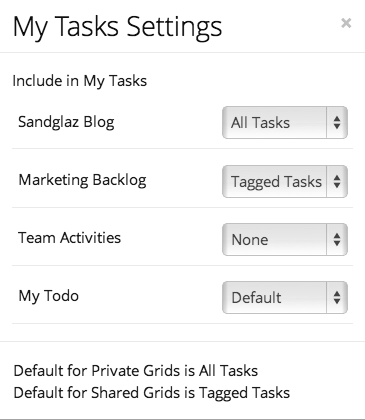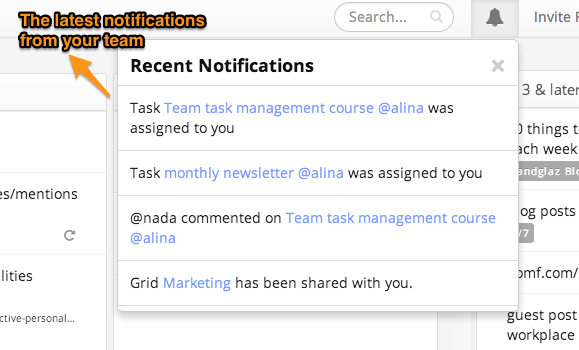The must-have features of your trusted team collaboration system
Before we delve into the vital features of your trusted collaboration system, let’s take a second to look at what a trusted system really is.
The term “trusted system” belongs to GTD philosophy. The human brain has a reminder system that is less than perfect, and that usually reminds us of things we need to do based on time and place (as opposed to what we actually need to do).
Your brain might work well in some settings. Let’s say you’re a construction worker - your brain will remind you when to perform certain tasks simply because you are immersed in the physical context of your work. But if you’re a knowledge worker, certain tasks are bound to slip out of your mind because there is no physical reminder of them.
That’s why you have your trusted system - an external support that gives you the right reminders at the right time, and that gives context to your to dos.
Trusted system 2.0
Just as individuals need trusted systems, so do teams. In fact, the majority of time, we don’t work in vacuums. We work with others, our team members, and our work is fluid, moving between team members. It goes through different stages and iterations. And it requires each team member to be accountable for their own work, and for the work of the team as a whole.
So what does your team’s trusted collaboration system need in order to be successful?
A bird’s eye view
Your trusted team collaboration system should give you the ability to see your tasks from different projects at one glance. In today's dynamic workplace, most of us work on more than one project at a time. As we are constantly switching between projects, we need to have a clear view of what needs to get done.

Also, each team member will probably be working on a different set of projects at any given time. So they will naturally need to customize which tasks from which projects they choose to see in their daily lists.

Ability to assign tasks to your team members
This one seems pretty straight forward. Within your team, you need to be able to assign tasks - top down, bottom up and laterally.
The ability to assign tasks will remove the friction from your collaboration and improve communication between team members. Keep in mind, assigning tasks should be a flat process. Just as a manager is able to assign tasks to the junior, so the junior should be able to assign a task to the manager.

Let’s say a member of your junior team needs you to check the work she did before she can move on with a project. She can either pester you with emails, chase you down the hall (probably at a very inconvenient time for you), and let you know what she needs from you (at which point it’s very likely you’ll forget and have to ask her later).
Or, she can add a task and assign it to you (which you would have done anyway in the previous example) and you will get notified in your trusted collaboration system.
You can see how the ability to assign tasks doesn’t only remove unnecessary hassles from team collaboration, it also saves communication time and has the potential to reduce the number of emails.
Context for your tasks
Your trusted team collaboration system should allow you to add context to your to do list. This depends on each task management system, but generally you want to look for these three things:
- the ability to classify your tasks other than by what project they belong to: this means that within a project, you can further classify these tasks. In Sandglaz, for example, you can do so with the use of hashtags.

- the ability to add notes to a task: this allows you to expand on the specifics of a task, so that team members understand exactly what you mean. For example, if you have a task related to a bug in your software, you want to be able to include all the details so that your team members will have the information they need.
- the ability to attach files to a task: this will not only reduce email, but will also keep the necessary files attached to the task they belong to. No way to lose a document!

Subtasks
When you’re working on a project, it’s important not only to break down your goals into actionable tasks, but also to further break down those tasks into subtasks. This allows team members to collaborate more easily and to efficiently delegate subtasks to each other so things get done faster.
Communication in the context of your tasks
Being able to chat with other team members within the context of a task is a great time saver. That’s why task commenting is an essential feature of your trusted collaboration system.

Think about it: you see a task in your task management tool assigned to you, but instead of going to your IM or email, you ask your team member a question right there and then. And when your team member receives the message, she doesn’t have to go search for the details of the task. She can see all the attached files and comments at a glance and respond to you right away.
Email communication replacement
Email communication, if not used correctly, can be a huge drain on your team members’ time and efficiency. That’s why your trusted collaboration system should diminish email communication as much as possible, to the point of fully replacing it. That’s why it’s also important for your trusted collaboration system to also have a simple notification feature that is not as intrusive and disrupting as emails are.

If you can do all of the above in your team task management app, then you’re on the right track to weaken the reliance on email as a primary means of communication for your team.
Of course, there are other things that are also important - for example, the ability to search through tasks, the ability to quickly find when a task was completed, or in what order tasks were completed. But the six mentioned above are absolutely vital for effective team collaboration.
What features do you value most in your team's trusted system? Share them with us and other readers in the comment section below!
Photo credit: David Wall, cc